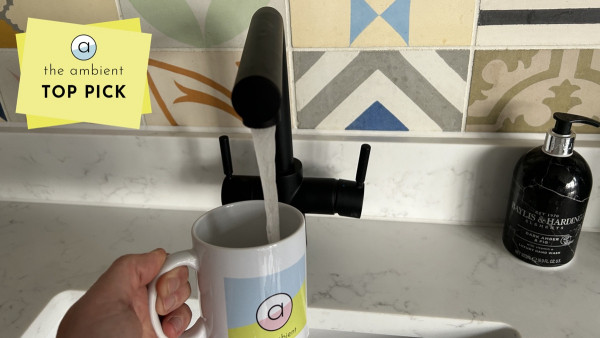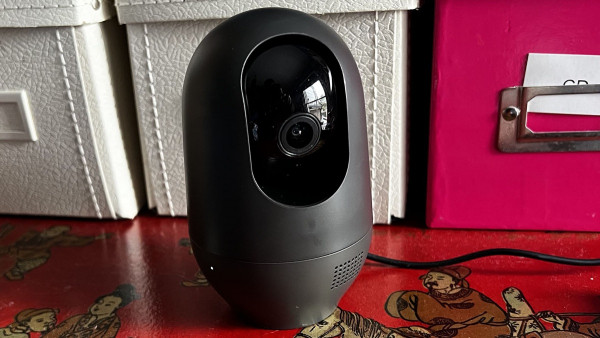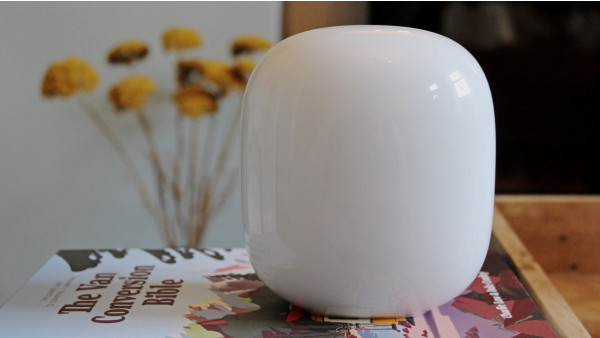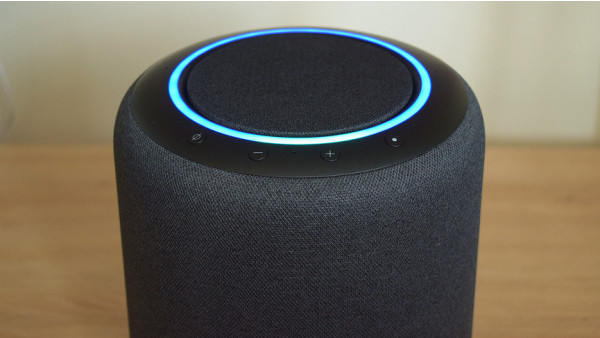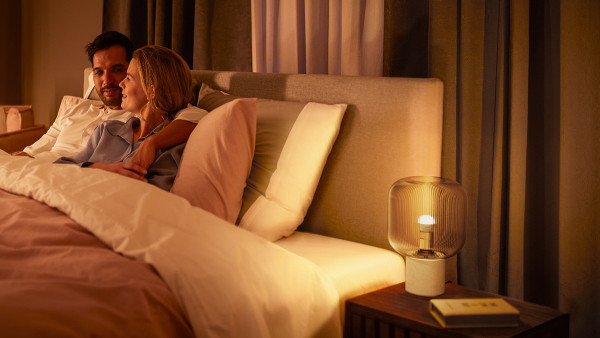Apple HomePod (2nd-gen 2023) review
7 min read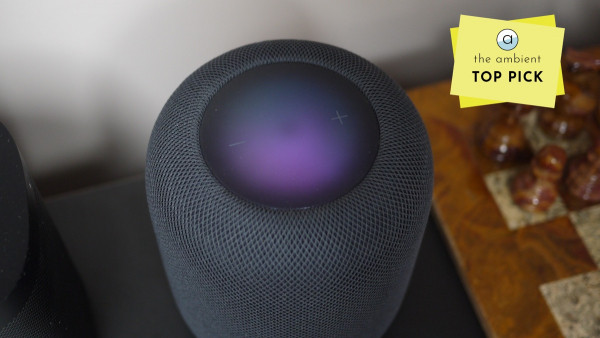
HomePod 2nd Gen is a refresh of the original HomePod, and while it doesn’t look any different, there are some new features. The second-generation HomePod is more of a refresh than a brand-new smart speakers.
The focus is still on the speaker, not the smart speaker. The addition of thread allows the Matter enabled HomePod to be the centerpiece of a revitalized smart home in the coming years.
To understand the complexity of Matter , read our guide.
We’ve been living with the Apple HomePod 2 for a few months now. Here’s what we think.
Apple HomePod 2 Price
Apple’s new HomePod is now available at PS299/$299 – a price that’s a surprising discount from its predecessor’s launch price in 2018.
You can build a smart home powered by Matter for less with the $99/PS99 Apple HomePod Mini.
The HomePod is more expensive than other alternatives, such as Amazon Echo Studio ($200/PS190) or Sonos One ($199/PS199). It’s an affordable device that delivers good audio quality for the price.
Sonos’ Era300 (PS449/$449), which is superior in sound quality and supports spatial audio for both Apple Music and Amazon Music but costs more than Apple’s product, has retaliated against Apple.
Apple HomePod 2 – What you need to know
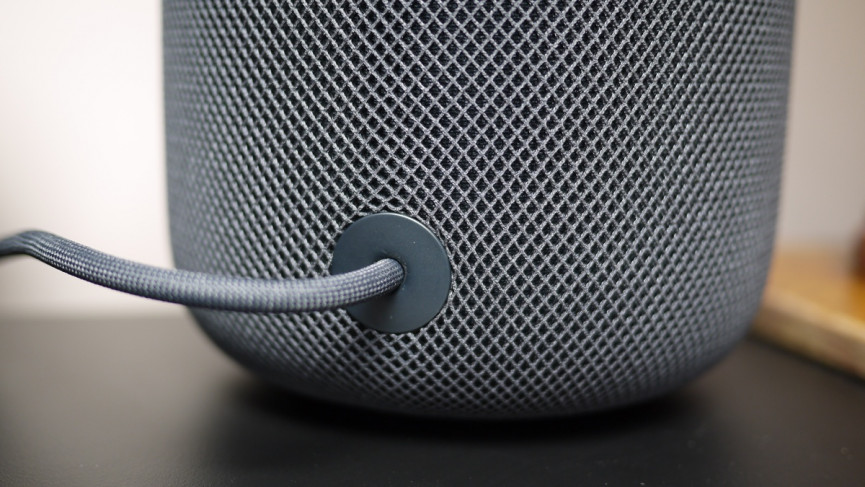
The design of the new HomePod is the same as its predecessor. It’s a small speaker that is just a little bigger than the Sonos One.
HomePod is identical to its predecessor in terms of appearance – it has the same fabric mesh exterior and the touch-enabled surface. Only the height has been reduced by 0.2 inches and it is lighter, going from 5.16lbs to 5.16lbs.
The same top is touch-enabled, and has volume control as well as pause/play. It’s not an actual screen, despite the Siri animation. The top does not display data or information about playback. The AirPods have a similar set of controls with double and triple taps to skip music forward or reverse.
Say “Hey Siri”, and you will see the screen light up in a colorful swirl. This is similar to what happens when you use Apple’s digital assistant for an iPhone.
A white light will begin to swirl during the setup mode. This will last about 10 seconds. Then you’ll hear an audible noise to indicate that your HomePod is now ready for pairing.
This thing pairs in seconds – simply place your iPhone close to it. This will transfer all of your Apple account information, including your home Wi-Fi password. Within two minutes, you’ll be able to ask Siri to play some music.
AirPlay is the only way to play music without Siri on the new HomePod. No Bluetooth or Spotify Connect. It’s best for iPhone-only households and Apple Music.
Siri still won’t play music from apps other than Apple Music, because there is no way to change the default service like Alexa. You’ll need to play music to your smart speaker from the apps themselves, negating the benefits of having a smart device.
AirPlay allows you to listen to Spotify on your HomePod.
The HomePod Mini as well as the second generation can perform all the functions of any regular AirPlay speakers. If your favorite streaming application is iOS-based and offers an AirPlay feature, you can stream your music through your iPhone or iPad.
HomePod does not have an aux-in jack. It also has Bluetooth built in but it is only for setup. HomePod isn’t a Bluetooth speaker. Once the setup is complete, there are Android workarounds that can be used but they are not worth it.
The speaker array is also slightly different. The HomePod 2 has a four-inch subwoofer and five tweeters instead of the seven tweeters in the original HomePod.
New Features at a Glance
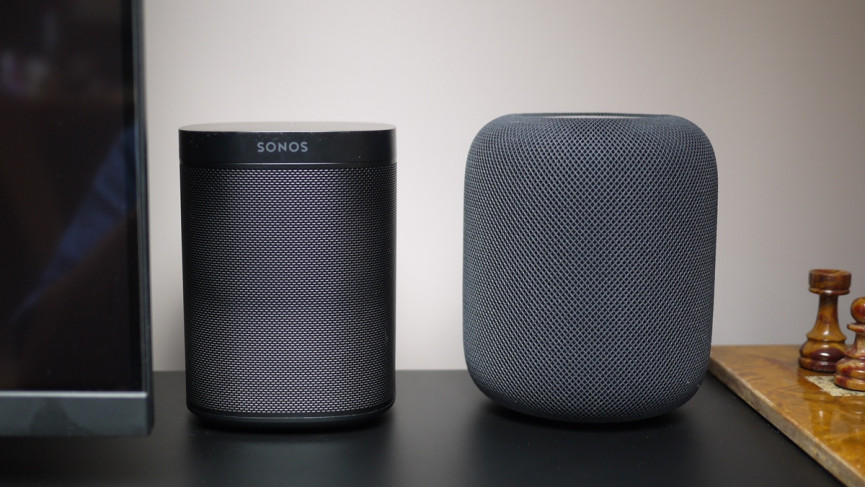
- Temperature sensor
- Humidity sensor
- Compatible with Thread-Powered Matter
- Speaker array with four tweeters and a subwoofer of 4 inches
- U1 chip
Audio and spatial
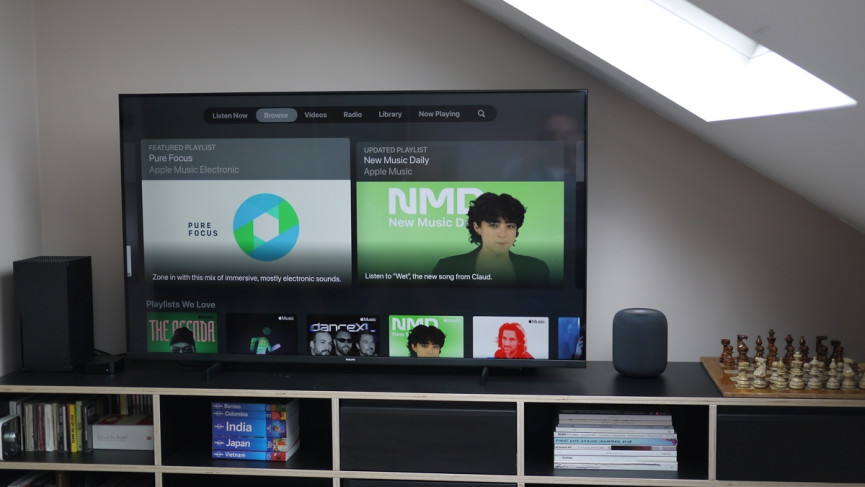
You’ll be impressed with the sound quality if you are here. The HomePod is powerful and loud for its size, and has a surprising bass.
The speaker might be too low-end for some people, especially in small rooms. However, there are settings to reduce the bass, if necessary.
The low bass setting would have been needed in our loft’s corner. Our personal taste is bass heavy, with lots of dub and reggae on rotation.
HomePod was placed next to our Alexa-driven Sonos One and it blew the One away in terms of sound quality. Even when listening to radio, there’s no comparison. The sound is richer, warmer and more punchy.
The Sonos Era 300, however, is a completely different beast. It is the only smart speaker capable of outperforming the HomePod in terms of its ability to be used as a standalone speaker for Spatial Audio.
The price difference is substantial, so you can get a pair of HomePods for a similar cost. We’ll explain why in a moment.
Spatial Audio is the USP of HomePod when it’s paired with Apple Music. The tracks are mixed with Dolby atmos to create a more immersive sound.
Some spatial mixes are spine tinglingly good, others not so much. When it’s done well, it can be a game-changer. We prefer the HomePod effect, which brings tracks to life. This is much better than the AirPods experience, where head-tracking can ruin the experience.
Spatial Audio is more likely to be applied to newer tracks than older ones. Blur’s The Narcissist benefits from the separation between the lead vocals and the backing vocals.
Simple Man, by Lynyrd Skynrd, shows off how the HomePod can deliver on both the guitar and bass, as well as the high hat. We use the term ‘well-rounded’ sound to describe an equal balance between all parts of the spectrum. However, none excel. HomePod is a great product that delivers on both fronts.
Spatial is compared by critics to the fake surround sound of 90s stereos. There are examples of this in the catalog. Spatial is a powerful experience, and HomePod can deliver it in spades. We’re also big fans of the fact that it’s free on Apple Music.
Apple Music (24-bit/48kHz), which is also fantastic, can be played on the HomePod using your iPhone or by asking Siri to play music.
There’s no need to do anything special to enable multi-room music. You’ll see HomePods in your AirPlay speaker list, whether you are using an iOS device or Mac. Select as many as you want to have music playing throughout your house.
Smart Home Skills and Matter
Smart speakers are a crucial component of a smart home. This is where the Ambient plays a role.
HomePod (2nd Gen), which is Matter-compatible, also includes a Thread border controller for rapid and seamless control of smart devices that support this standard. You’ll need this stuff to build a smart home with Matter devices in the future.
The Nanoleaf Essentials Light Strip, one of the very first Matter products, was up and running in just seconds. It had a wide range of features including color control.
Matter is built on Apple’s smart home technology. Adding a product to Matter is the same as scanning a QR Code in HomeKit. You don’t need to download the proprietary app, or create an account anywhere else.
The smart-home ecosystem will get much larger as Matter expands the number of devices that are compatible with Apple Home.
Siri is the main reason why the HomePod fails to compete with the Echo speakers and Sonos speakers.
Siri still lags
Siri is not yet as good as Alexa as a voice assistant, nor is it as easy to perform relatively simple tasks using voice commands. Many examples are available. Siri failed to respond to our quick weather question after much deliberation. This is really beyond the basics.
Siri can handle music queries much more efficiently. It is also able to hear a “Hey Siri” over loud music.
There are some minor downsides. BBC Radio is not supported in the UK and must be played using AirPlay via the BBC Sounds App. Alexa’s BBC Sounds skill is a small inconvenience, but we are used to asking Alexa to play the radio without having to use our phones.
We gave up on listening to radio through HomePod in the end. This is a possible win for Apple if not the user.
Siri also had trouble determining whether we wanted to receive information through the iPhone or HomePod. It usually happened when we held our iPhone while talking to the speaker.
HomePod is also a humidity sensor and temperature sensor. The accuracy of the HomePod has improved. We don’t have a heating system that allows third-party sensors. However, this could become more useful when Matter is released.
Siri can be asked to call someone or answer a incoming call. Once you’ve enabled the feature, you can say “Hey Siri” to call Jennifer or “Hey Siri”, answer my call.
Apple TV Link
HomePod is best in all Apple homes. It was really good once we hooked it up with our Apple TV 4K.
We set up the homePod in our loft as the default speaker of the Apple TV. The HomePod was excellent, although a stereo pair would have been better.
The new Apple TV 4K’s eARC feature is even better, allowing the HomePod take over any sound played on the TV. A stereo pair is a great alternative to soundbars in the mid-range, and can compete with the Sonos Beam.
Our Xbox Series X was also converted into a CD-player, and we finally had a quality outlet for a few special CDs that we’d kept.

